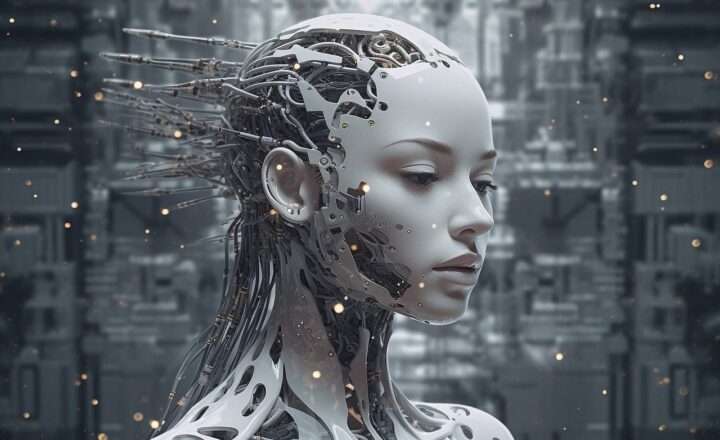
As artificial intelligence (AI) systems increasingly infiltrate our daily lives and revolutionize industries, it’s easy to assume that AI can do it all. From chatbots providing customer service to algorithms predicting the weather, machines have shown remarkable proficiency in managing tasks once thought to require human intelligence. However, despite these advancements, there are significant limitations that AI still grapples with. This article seeks to explore these limitations to better understand the current capabilities and challenges that AI technology faces.
1. Understanding the Complexity of Human Emotions
One of the most profound limitations of AI technology is its inability to fully comprehend and respond to human emotions. While AI can analyze text for sentiment or detect vocal tone, it lacks the nuanced understanding of emotional complexities that humans naturally possess.
AI lacks the lived experience and instinctive emotional intelligence that comes from being human. There are several areas where this limitation becomes particularly evident:
- Empathy: AI may be able to mimic empathetic responses through programmed phrases, but it cannot genuinely feel empathy. This lack of authenticity means AI may miss critical emotional cues in conversation, leading to misunderstandings and inadequate responses during sensitive interactions.
- Conflict Resolution: Resolving conflicts often requires a deep understanding of human emotions and social dynamics. AI-powered solutions struggle to navigate the subtleties of discussions where emotions run high, potentially exacerbating tensions instead of diffusing them.
- Creative Expression: While AI can generate art and music based on patterns in existing works, the authentic human touch of creativity is often absent. Machines lack the ability to convey emotions, messages, or personal experiences through creative works in a way that resonates deeply with audiences.
Human experience is not easily replicated by algorithms; the art of understanding emotions remains a challenging frontier for AI that is unlikely to be conquered soon.
2. The Challenge of Context and Common Sense
Another major limitation of AI systems is their struggle with context and common sense. While AI can excel in specific tasks defined by structured data, applying logic to practical situations often proves difficult. Here are a few instances presenting this challenge:
- Understanding Ambiguity: Natural language is rife with ambiguities and idioms that demand contextual awareness to interpret accurately. AI often misinterprets sentences due to a lack of understanding of underlying meanings and multiple possible interpretations.
- Physical Context: AI lacks the common-sense reasoning that helps humans navigate the physical world. For example, an AI might fail to infer that an object obstructs a path, simply treating it as just another data point without understanding spatial implications.
- Hypothetical Reasoning: Humans are adept at hypothesizing about “what if” scenarios based on prior experiences. AI struggles with this because it relies on existing data without the ability to ponder possibilities creatively or infer outcomes based on emotional or personal experiences.
These limitations in contextual understanding can lead to miscommunications and errors in judgment that are critical in fields such as law, medicine, and customer service.
3. Reliability and Trustworthiness Concerns
Trusting AI systems with critical tasks is an ongoing concern due to inherent limitations. Even though AI can process vast amounts of information quickly, it can also produce unreliable results. Consider these factors:
- Data Bias: AI outcomes are heavily influenced by the data it is trained on. If this data contains biases, the AI can perpetuate and even amplify these biases in its decisions and predictions, leading to ethical concerns and misjudgments in applications such as hiring or law enforcement.
- Explainability: Many AI models, especially deep learning, are often considered “black boxes” — their decision-making processes are opaque even to developers. This lack of transparency makes it difficult to assess their reliability and question their conclusions, preventing users from fully trusting AI outcomes.
- Overreliance on Automation: Organizations may become overly reliant on AI’s capabilities, which can lead to complacency and a lack of critical human oversight. In safety-critical situations — such as autonomous driving — this overreliance can have dire consequences when AI fails to perform as expected.
Building a relationship of trust between humans and AI requires ongoing attention to these concerns, alongside robust testing and transparency in how AI systems function.
4. Creativity and Originality Limitations
One of the most apparent limitations of AI is its struggle with creativity and originality. While AI language models can generate human-like text and algorithms can create art or music, what they lack are the essential qualities that define genuine creativity: authenticity and emotional depth. The following aspects illustrate these limitations:
- Imitation vs. Innovation: AI systems are predominantly trained on existing data, making them adept at imitation rather than creating novel ideas. While they can remix existing concepts, true originality and groundbreaking innovation remain elusive for machines.
- Artistic Intention: Human artists often infuse their work with intention, personal narratives, and emotions, allowing audiences to connect on a personal level. AI-created art often lacks this intention, resulting in works that may technically impress but fail to evoke genuine emotional responses.
- Cultural Nuances: AI often struggles to capture the cultural significance or social context of creative works. The subtleties behind cultural references or humor can escape AI understanding, leading to outputs that may not resonate with diverse audiences.
The significance of human creativity in various fields — from art and literature to science and technology — remains a realm where AI cannot compete fully, highlighting its limitations in producing work that feels genuinely groundbreaking.
5. Conclusion: The Future of AI Development
As AI technology progresses, it’s crucial to recognize its limitations and differentiate between its capabilities and genuine human understanding. Addressing these challenges is essential for developing AI systems that effectively complement human intelligence without risking ethical and practical complications.
Future advancements in AI should focus on enhancing emotional intelligence, improving contextual understanding, ensuring reliability, and fostering true creativity to build systems that genuinely enhance human capabilities rather than trying to replace them. As we shift into a future more integrated with AI, carrying out this balance will be vital.
AI can undoubtedly reshape how we live and work. Still, by acknowledging its limitations, we can better harness its potential — achieving a future where machines and humans work collaboratively for the greater good.







